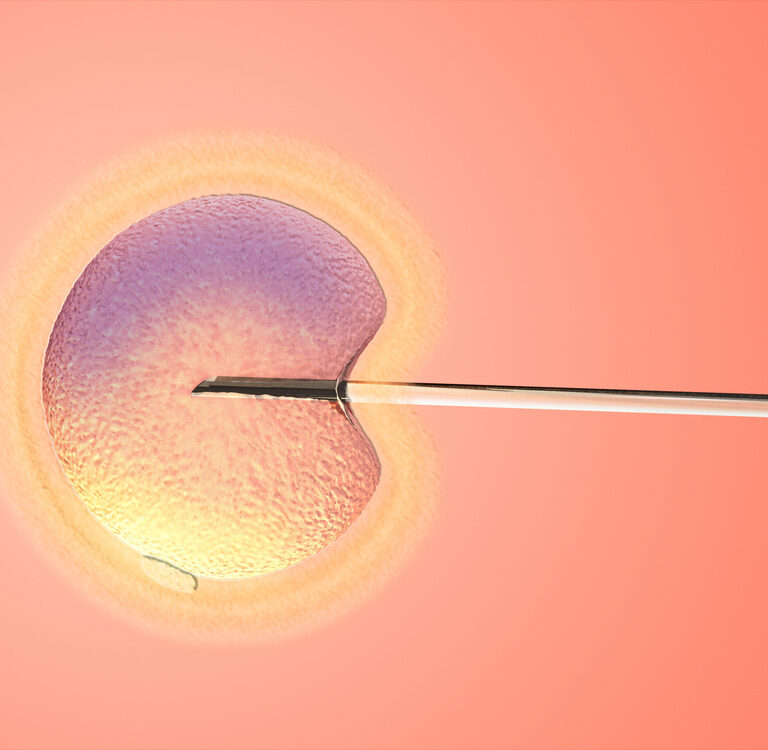In vitro fertilization (ART) is a method commonly referred to as IVF. In vitro fertilization is the process of fertilization in which an egg cell and a sperm cell combine manually in a laboratory and then, during the embryo transfer process, the resulting embryo is transferred to the uterus. Among other methods of assisted fertility, one can mention the Gamete intrafallopian transfer (GIFT) and Zygote intrafallopian transfer (ZIFT). In this article we want to explain the treatment of infertility with IVF.
Steps of treatment of infertility with IVF:
About 4 weeks before the start of theIVF treatment period, it takes time for the initial ultrasounds, hormonal tests and necessary tests, and then the IVF steps begin. EVF steps are usually performed in the following order:
Stage One, Ovarian Stimulation: Fertility drugs are prescribed to stimulate the ovaries and produce eggs. The ovarian stimulation process takes about two weeks. To do this, a large number of eggs must be produced because some eggs either do not develop or do not fertilize after being removed from the ovaries. At this stage, vaginal ultrasound is used to examine the condition of the ovaries and blood tests to check hormone levels.
Read Also

Stage two: ovulation or puncture: after ovarian stimulation, egg cells are brought out by ultrasound imaging through a small surgery in which a hollow needle is directed through vagina into hole pelvic cavity toward egg cell and this is called ovulation or puncture. The puncture procedure takes roughly half a day and the painkillers are prescribed for alleviating pain and unease.
Step three: providing sperm sample: after puncture, the process of sperm preparation is carried on at the same day to sperms be prepared for fertilization with egg cell.
Step four: fertilization of egg cell. During a process named egg insemination, sperm and egg cell are mixed in laboratory containers and are kept in lab so that the fertilization happens. In some cases that the probability of insemination is low, the Intracytoplasmic sperm injection (ICSI) method is used. During this process, a sperm cell is directly injected into cell egg so that insemination is done. The egg cells are controlled till occurrence of insemination and accomplishment of cellular division. When the egg cells insemination is done, the inseminated egg cells are considered as embryo. The experts regularly examine the embryos to be informed of their appropriate growth. Within five days, a natural embryo has multiple cells that are dividing actively. The couples exposed to the danger of transferring a genetic disease to their children can get help beside the ordinary method of IVf, the Pre-implantation genetic diagnosis (PGD) method which is done three or four days after egg cells insemination to examine their embryo health.
Stage Five, Embryo Transfer: Embryos are transferred to a woman’s uterus, usually three to five days after the eggs are removed and fertilized. A catheter or small tube is inserted into the uterus to transfer the fetus. This process is painless for most women, although they experience some slight contractions. If embryo transfer is successful, implantation usually occurs six to ten days after the egg is brought out.
The number of embryos transferred usually depends on the number of eggs collected and the age of the mother. The implantation rate decreases with increasing maternal age. Therefore, more eggs must be fertilized and transferred to the uterus to increase the chance of implantation depending on the age of the mother. Of course, more fetuses increase the risk of multiple births. Consult your doctor before performing a fetal transfer. Our consultants give you great advise on IVF in Iran.

Read Also
When is treatment of infertility with IVF recommended?
Obstruction of the fallopian tubes or pelvic adhesions
Causes of infertility in men (decreased sperm count or motility)
Failure to complete two to four cycles of ovarian stimulation with IUI
Higher age of woman (over 38 years)
Decreased ovarian reserve (reduced number of eggs)
Severe endometriosis
Infertility with unknown causes
Duration of treatment of infertility with IVF
Regarding the duration of IVF treatment, it can be said that it takes about 3 weeks from the start of prescribing and receiving drugs to the transfer of the fetus into the uterus.
But before the start of IVF treatment, from the first visit and consultation, review of medical records and records to ultrasound examinations and tests necessary to start the IVF process, it will take about 4 weeks.
After these steps, IVF treatment is started and fertility drugs are prescribed for about two weeks. During this period, the necessary tests and ultrasound are performed to control the condition of the follicles and uterus, and after these two weeks, ovulation or puncture is performed, which takes about half a day. The egg and sperm are then fertilized in the laboratory, and about 3 to 5 days after fertilization, the embryo is examined for transfer and then the embryo is transferred.
About two weeks after the end of IVF treatment, a beta test, or pregnancy blood test, is performed in two stages to confirm pregnancy.
Treatment of infertility with IVF : Post-IVF care
Care after IVF is very important and necessary and must be observed. Recommendations and care after IVF include the following:
After the embryo transfer, preferably rest for 24 hours and then start your daily activities. Do not swim for 48 hours or take a bath. It is not recommended to do heavy work, lifting heavy things, strenuous physical activity and exercise until the pregnancy is stable. Adjust your diet so that you do not get constipated or bloated.
You may see some clear discharge or spotting after IVF, a slight swelling and tenderness when touching the breasts, as well as mild muscle cramps are normal and you do not need to worry. But if you have moderate or severe pain or heavy bleeding, be sure to call your doctor.
Why treatment of infertility in Iran?
Iran with great medical infrastructure and appropriate cost offers best medical services in this regard. We recommend you to read more on treatment of IVF in Iran.


